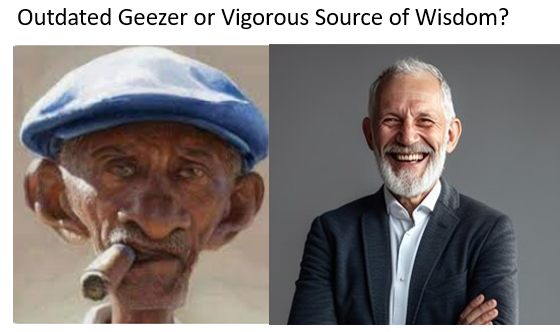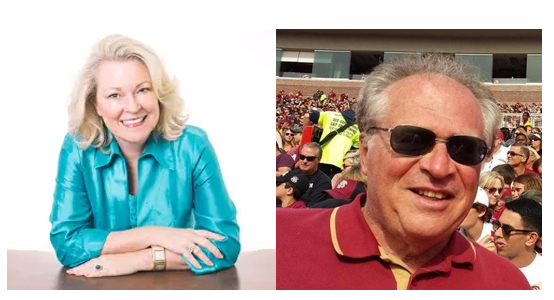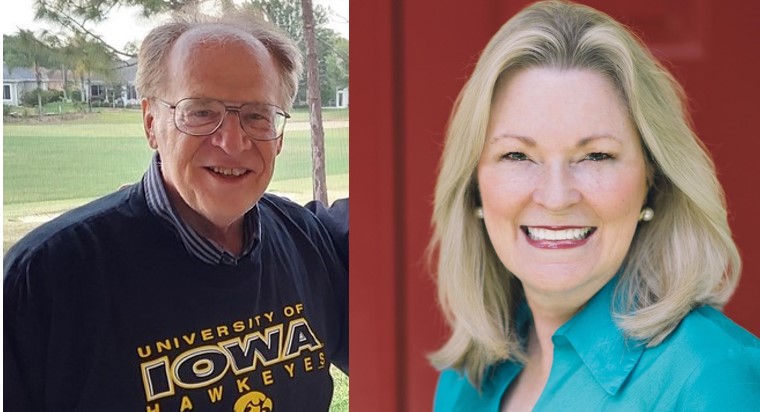
By Don Daake
A previous version was published in the Kankakee Daily Journal March 20, 2024
“An elderly person at home [is like] a living golden treasure.” Chinese saying
“For there is assuredly nothing dearer to a man than wisdom, and though age takes away all else, it undoubtedly brings us that.” Roman philosopher Cicero
Youth is wasted on the young. George Bernard Shaw
When we were young and even middle age, we laughed at the image portrayed by the term “Geezer.” Then, one day, we wake up and find out we have met the geezers, and they are us! As incredible as it sounds, 10,000 Americans are retiring every day. But contrary to the old stereotypes many of these Boomers seem to be just hitting their stride.
My longtime friend and Kankakee SCORE (Service Corps of Retired Executives), President, the late Michael Holtzman would often talk about diamonds in our own backyard. He was referring to the many resources, companies, and people we already had in the County and surrounding area. But to be more specific, there is so much knowledge, wisdom, and potential in senior citizens right here in Kankakee County.
These resources can come in many forms. Stanford University’s research, for example, “shows that aging adults play critical roles in the lives of young people, especially the most vulnerable in society. Volunteering is one way to bring older adults and young people together. The key is to change social norms to encourage relationship building between generations.” Recognizing that this gold of wisdom is too often hidden in plain sites is essential.
This knowledge and wisdom can be utilized in both work and volunteer settings. Columbia University’s Mailman School of Health identifies “Ten Advantages of Older Workers in New Your City’s Small Businesses.” Although the article was aimed at small businesses, it can equally apply to non-profit organizations, volunteers, and even individuals.
I will explain three of these advantages. First, older workers are skilled and experienced and retain business knowledge. Contrary to the myth that they need to be more technologically savvy and aware of current times, in most cases just the opposite is true.
Of course, we’ve always had people waiting it out for retirement or “retiring on the job.” But if that is a widespread problem, it rests squarely on management’s shoulders. One of the most important reasons older workers quit these days is not that they are not up to the task. Rather they get fed up with the lowered standards that many newer workers and managers are satisfied with.
On the other hand, intelligent managers and visionary leaders will do whatever they can to capture the wisdom and know-how of those about to retire. An important area of scientific research that has emerged in the last few years is about taken-for-granted implicit knowledge, known as tacit knowledge. The process of learning about this hidden or implicit resource utilizes specialized techniques such as cognitive or causal mapping by interviewing people in depth. But don’t do that on their last work day in the exit interview. Do it at least 1-2 years before they retire, and most importantly, offer them some sort of special recognition and financial rewards.
Second, your older customers, constituents, church, fraternal, and social club members, have critical contacts and networks that are much deeper and wider than usually recognized. Exploit these for mutual benefit.
Third, Columbia’s list also recognizes that because of their experience, knowledge, and time, senior people are usually much better at providing excellent customer service or representing your organization at its very best. In recent years, we have seen retired workers come back into the workforce not because they have to, but because they want to. Companies like Lowes, Menards, and many auto supply houses by hiring these people, provide their customers with knowledge based on 20-40 years of know-how. For example, I have talked to mechanics who once owned their shop and skilled tradesmen who wanted something to do. In many cases, they work for less than 50% of what they were paid during their career.
A few years ago, The Daily Journal featured an article about Ben Deck (March 18, 2016.) The late Dennis Yonka wrote:
“Ben Deck was 78 when he decided he was ready for a new career. The World War II Marine and Bunge Oil retiree found his niche at Riverside Medical Center. And Wednesday, he celebrated his 90th birthday, still on the job. Deck lives near the hospital and takes a bus to work, Monday through Friday. He kisses his wife, Caroline, goodbye and heads out at 8 a.m. He has coffee with friends, and reports to his post as a Customer Service Associate by 8:30. I think I’d crawl the walls if I wasn’t getting out to work every day,” he said… And before the Riverside gig, Ben kept himself busy at a local chamber of commerce office. On the job at Riverside, Ben puts the focus on visitors, especially those who need their spirits lifted, and, in the other direction, he’s sensitive to those who need a place to sit.
From personal experience, hundreds of people, including me, will say: “To know Ben is to like Ben” He is the local version of Will Rodgers, who said, “I never met a man I didn’t like.”
So whether you are a manager, a leader of a not-for-profit, or a church, please realize that there is gold and diamonds all around us. Many companies hire these people when they can find them. However, rather than treating them like newbies, they must give them respect, flexibility, and reason to come to work.
You would not believe the number of people who would love to just be asked to share their experiences. Sure, some of us are old Geezers (and we know who we are.) But we are walking around with Gold and Diamonds in our hands. Some are even Genius Geezers. The best managers and leaders will relinquish their arrogance towards and misperceptions of older people. When they do, they will find a wealth of experience and knowledge.
However, I’d like to offer a bit of caution here, especially to non-profits and others who rely on donations. Older Americans hold a large portion of the wealth and disposable income. We are a fairly savvy group, though. If we sense that all you want is our money and care nothing about our advice, wisdom, and expertise, don’t bother asking! The gold will be sent to other worthy causes, spent elsewhere, or even returned to Spain.
Don Daake, B.S., MBA, Ph.D. is Professor Emeritus at Olivet. While at Olivet, Don taught courses in marketing, advertising, entrepreneurship, statistics, and business strategy. He also engaged in significant research activities. Over the last 15 years, he has authored or co-authored over 400 Daily Journal Main Street columns. At age 73 he is proud to be actively engaging in research and writing.









